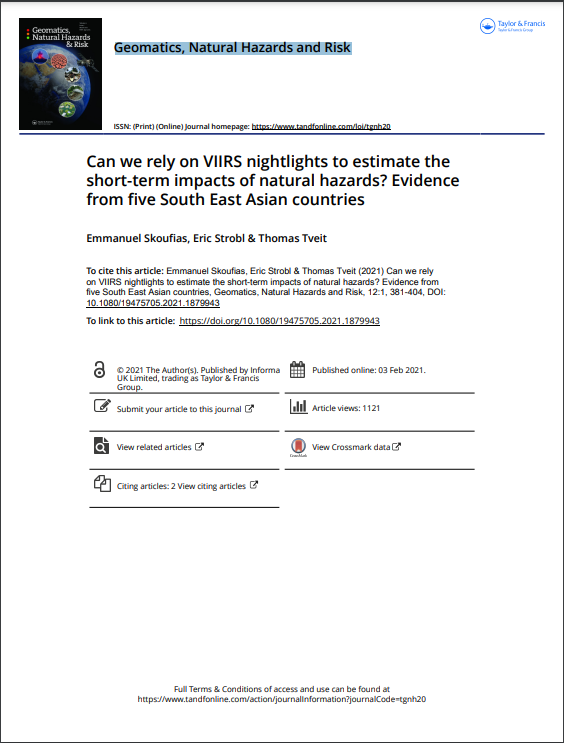Can We Rely on VIIRS Nightlights to Estimate the Short-Term Impacts of Natural Hazards?
Licencia: Creative Commons (by)
Autor(es): Skoufia, Emmanuel; [et al.]
This paper utilizes Visible Infrared Imaging Radiometer Suite (VIIRS) nightlights to model damage caused by earthquakes, floods and typhoons in five South East Asian countries (Indonesia, Myanmar, the Philippines, Thailand and Vietnam). For each type of hazard we examine the extent to which there is a difference in nightlight intensity between affected and non-affected cells based on (i) case studies of specific hazards; and (ii) fixed effect regression models akin to the double difference method to determine any effect that the different natural hazards might have had on the nightlight value. The VIIRS data has some shortcomings with regards to noise, seasonality and volatility that we try to correct for with new statistical methods. The results show little to no significance regardless of the methodology used. Possible explanations for the lack of significance could be underlying noise in the nightlight data and measurements or lack of measurements due to cloud cover. Overall, given the lack of consistency in the results, even though efforts were made to decrease volatility and remove noise, we conclude that researchers should be careful when analyzing natural hazard impacts with the help of VIIRS nightlights.
[2021]
Compartir:
Una vez que el usuario haya visto al menos un documento, este fragmento será visible.


